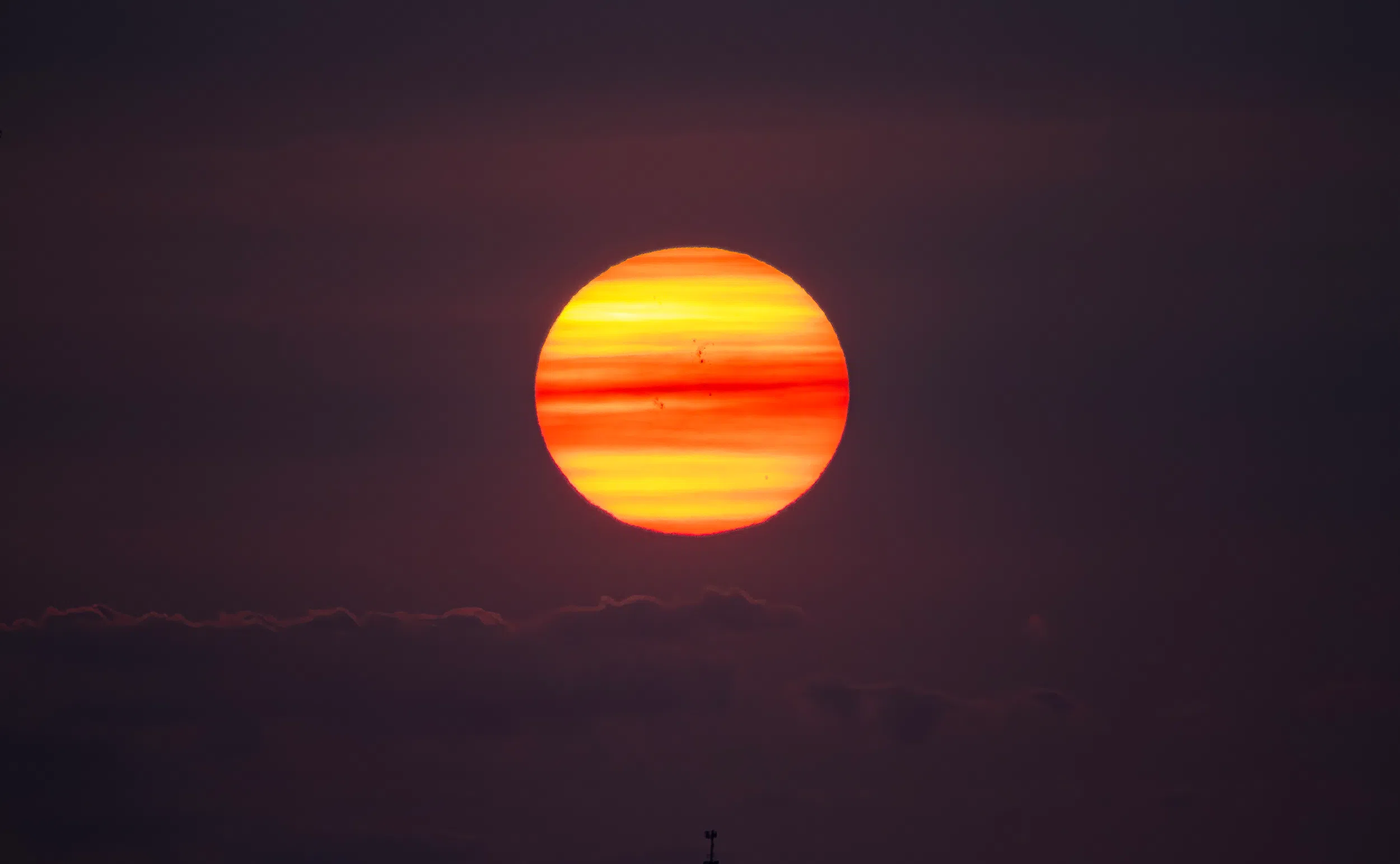KEARNEY — Owning to a change in the upper-level winds, wildfire smoke from the Canadian province of Saskatchewan and Manitoba overspread Nebraska during the evening of Friday, May 30.
While skies were hazy and milky during the afternoon, the most acute effect was seen at sunset when the sun seemed to be “dimmed.”
Light moves in waves as it travels from the source, and every shade of color the human eye can see has a different wavelength. Reds and oranges have a longer wavelength than shades of blue or violet. Light from the sun looks white, but it’s actually a combination of all visible colors. As light moves to our eyes, it’s going to interact with different particles in our atmosphere and scatter.
Sunrises and sunsets tend to be on the more reddish side because the sun angle is lower. This means light travels further through more atmospheric particles. The result is violets and blues getting scattered out completely, making the yellows, oranges and reds more visible.
When you introduce smoke particles, some of them can be larger than the wavelengths coming in. When a larger particle scatters light, it’s known as Mie scattering. This type of scattering leads to longest of wavelengths being scattered best. This is why you end up with very reddish sunrises and sunsets when there is wildfire smoke aloft.
Nearly two dozens wildfires were burning in Canada at the end of May, according to the Associated Press, Canada’s wildfire season runs May through September. Its worst-ever wildfire season was in 2023. It choked much of North America with dangerous smoke for months.



















